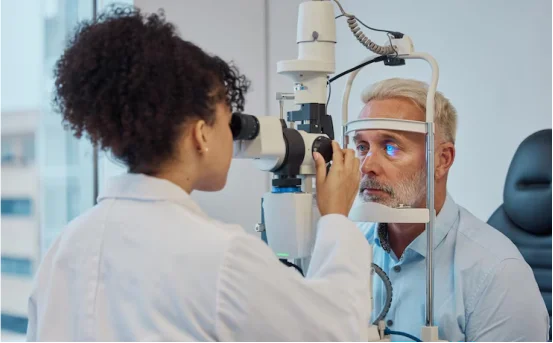Ear drum repair surgery becomes essential. Also referred to as tympanic membrane repair, these procedures aim to close the hole in the eardrum, improve hearing, and protect the middle ear from future infections.
But not all ear drum injuries are the same and neither are the surgeries used to treat them. Depending on the severity of the damage, its location, and whether the tiny bones in the middle ear are also affected, ENT specialists may recommend different surgical approaches. Understanding these types of eardrum repair surgeries can help patients feel more confident and informed about their treatment options.
What Is the Ear drum and Why Is It Important?
The ear drum is a thin membrane that separates the outer ear from the middle ear. It plays a crucial role in hearing by vibrating in response to sound waves. It also protects the middle ear from bacteria, water, and foreign particles.
A perforated ear drum a hole or tear in the membrane can lead to :-
-
Hearing loss
-
Recurring ear infections
-
Ear discharge or drainage
-
Tinnitus (ringing in the ears)
-
Imbalance or dizziness
When such damage does not heal naturally, doctors may recommend surgical intervention.
What Is Ear drum Repair Surgery?
Eardrum repair surgery refers to procedures aimed at closing a hole or repairing damage to the tympanic membrane. These surgeries not only improve hearing but also prevent infections and restore ear structure.
There are primarily two types of ear drum repair surgery :-
-
Myringoplasty
-
Tympanoplasty
Types of Ear drum Repair Surgery
Let’s explore each of these in detail.
Myringoplasty
What Is Myringoplasty?
Myringoplasty is a minimally invasive surgical procedure used to close small perforations in the eardrum. It is typically recommended when the middle ear structures are intact and only the eardrum is damaged.
Who Needs It?
-
Patients with a chronic hole in the eardrum
-
Individuals with recurring ear infections
-
People experiencing mild hearing loss due to a small eardrum perforation
How Is Myringoplasty Done?
-
The procedure is usually done under local or general anesthesia.
-
A graft is taken from a nearby tissue source, usually temporalis fascia (tissue from just above the ear).
-
The graft is carefully placed over the hole in the eardrum to close it.
Benefits of Myringoplasty :-
-
Simple, short procedure
-
Quick recovery time (typically 1–2 weeks)
-
Improved hearing
-
Reduced risk of future infections
Recovery and Aftercare :-
-
Patients are advised to keep the ear dry.
-
Avoid strenuous activity or flying for a few weeks.
-
Follow-up visits are necessary to monitor healing.
Tympanoplasty
What Is Tympanoplasty?
Tympanoplasty is a more extensive form of eardrum repair surgery. It involves repairing both the eardrum and the small bones of the middle ear (ostioles) if they are damaged. It is used when the perforation is large or if there is chronic middle ear disease.
Types of Tympanoplasty
There are five types of tympanoplasty, classified based on the extent of damage :-
Type I Tympanoplasty (Myringoplasty)
-
Only the eardrum is repaired; the middle ear bones are intact.
Type II Tympanoplasty
-
The eardrum and malleus (one of the middle ear bones) are repaired or reconstructed.
Type III Tympanoplasty
-
When the incus and malleus are damaged, but the stapes bone is intact.
Type IV Tympanoplasty
-
The stapes is partially damaged, and the repair involves creating a protective window for sound conduction.
Type V Tympanoplasty
-
Used when the middle ear cavity is significantly altered, such as with inner ear exposure (fenestration procedure).
How Is Tympanoplasty Done?
-
The surgery is usually performed under general anesthesia.
-
A postauricular incision (behind the ear) or endoscopic approach is used to access the middle ear.
-
A graft, often from the patient’s own tissue, is used to close the perforation and/or reconstruct the ostioles.
Benefits of Tympanoplasty
-
Restores hearing more effectively in moderate to severe cases
-
Repairs more complex damage
-
Prevents future ear infections
-
Improves quality of life
Recovery and Aftercare
-
Recovery takes about 2–4 weeks.
-
Patients may experience mild ear pain or drainage.
-
Keep the ear dry and avoid activities that create pressure changes (like flying or diving).
-
Audiometric testing is done post-surgery to assess hearing improvement.
Additional Procedures in Ear drum Repair
Sometimes, ear drum repair surgeries are combined with other procedures depending on the condition of the ear :-
Ossiculoplasty
-
Repair or replacement of damaged ostioles (middle ear bones)
Mastoidectomy
-
Removal of infected bone from behind the ear in chronic infections
Stapedectomy
-
Performed when the stapes bone is affected, commonly in otosclerosis
These are typically performed along with tympanoplasty when deeper middle ear issues are involved.
Risks and Complications
While ear drum repair surgeries are generally safe, some risks include :-
-
Infection
-
Graft failure (eardrum does not heal properly)
-
Tinnitus
-
Dizziness
-
Hearing loss (rare and usually temporary)
-
Facial nerve injury (very rare)
Choosing an experienced ENT specialist reduces the risk of complications.
How to Prepare for Ear drum Repair Surgery
Before surgery, your ENT doctor may recommend :-
-
Audiometry to assess hearing levels
-
CT scan if deeper structures need evaluation
-
Avoiding smoking, as it can affect healing
-
Stopping certain medications like blood thinners
Always follow pre-operative instructions closely to ensure the best results.
Conclusion
The type of ear drum repair surgery you need depends on several factors, including :-
-
Size and location of the perforation
-
Condition of the middle ear
-
Level of hearing loss
-
History of infections
Consulting an experienced ENT surgeon is the best way to decide the most suitable treatment. Whether it’s a simple myringoplasty or a complex tympanoplasty, timely treatment can restore hearing, prevent infections, and improve your overall ear health.























